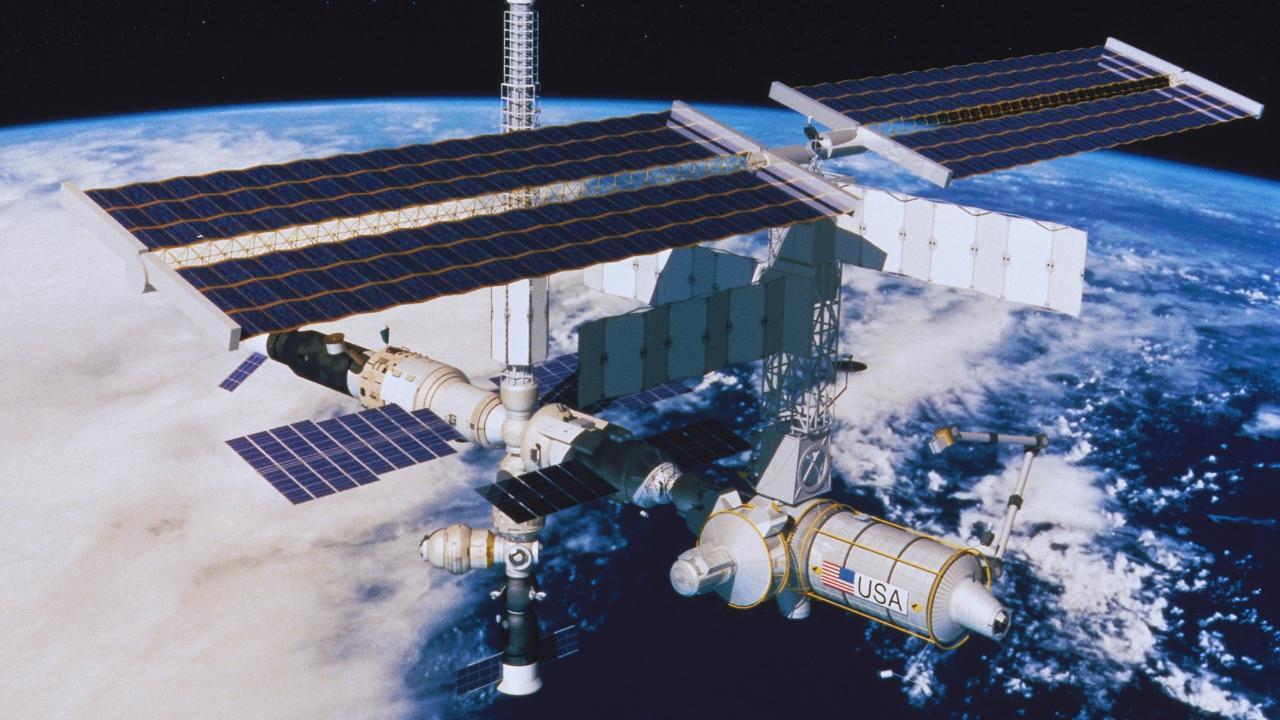
Join 10k+ people to get notified about new posts, news and tips.
Do not worry we don't spam!

Post by : Anis Farhan
NASA’s calendar for 2025 is packed with promise, but two missions stand out for their scientific ambition and cosmic relevance: IMAP (Interstellar Mapping and Acceleration Probe) and Pandora, a space-based observatory designed to analyze the atmospheres of exoplanets. Together, these missions represent the vanguard of Earth’s efforts to decode the energetic phenomena that shape our solar system—and potentially, life beyond it.
IMAP is set to launch on a mission to the edge of the heliosphere, the vast bubble carved out by the Sun’s magnetic field, where solar wind collides with galactic space. Meanwhile, Pandora will focus its instruments on nearby stars and their planets, filtering through cosmic light to examine atmospheres in search of biosignatures and planetary habitability.
Though very different in scope, both missions will help answer enduring questions: How does solar activity shape space weather? And what are the chemical fingerprints of distant worlds?
Scheduled for launch in late 2025, the Interstellar Mapping and Acceleration Probe (IMAP) will be stationed at the Sun-Earth L1 Lagrange Point, about 1.5 million kilometers from Earth. Its core mission is to investigate solar wind particles, interstellar ions, and cosmic radiation—phenomena that affect everything from GPS signals to astronaut safety.
IMAP's specific goals include:
Mapping Energetic Neutral Atoms (ENAs): These particles are formed in the turbulent boundary where solar wind meets interstellar gas. Tracking them allows scientists to map the shape and behavior of the heliosphere.
Studying Cosmic Ray Acceleration: Understanding how high-energy particles are accelerated at the edges of our solar system will provide insights into galactic radiation and the behavior of cosmic magnetic fields.
Monitoring Space Weather: IMAP’s observations will help improve space weather models, which are crucial for protecting satellites, power grids, and astronauts on deep space missions.
The mission is especially timely as humanity moves closer to returning to the Moon and preparing for Mars. Space weather forecasting isn’t just academic—it’s a matter of survival.
At the heart of IMAP’s mission is a thin, distant zone called the heliopause—the outermost layer of the Sun’s influence. It’s here that the solar wind slows and merges with the interstellar medium. This region acts as Earth’s first line of defense against cosmic radiation.
Studying this area allows us to understand:
How much protection Earth really has from galactic cosmic rays.
The limits of the solar system’s magnetic influence.
Whether interstellar pressures or changes in solar activity can compress or expand the heliosphere over time.
IMAP’s findings could dramatically reshape our understanding of solar-system dynamics—and provide a preview of the challenges future spacefarers might face when venturing beyond.
While IMAP peers outward toward the stars, Pandora will focus its gaze back inward—to stars and planets light-years away. This compact but powerful space telescope is designed to measure exoplanet atmospheres with unprecedented precision.
Unlike Hubble or JWST, which are general-purpose telescopes, Pandora is tailored for a specific task: characterizing the chemical composition of alien skies. By studying how a planet’s atmosphere filters starlight during a transit (when a planet passes in front of its star), Pandora can detect:
Water vapor
Carbon dioxide
Methane
Ozone and biosignatures
What makes Pandora unique is its ability to simultaneously observe both the target exoplanet and its host star, reducing contamination from stellar variability—a major hurdle in atmospheric analysis.
Pandora isn’t a discovery telescope; it’s a diagnostic one. It will study around 20 stars and 39 exoplanets already identified by other missions like TESS (Transiting Exoplanet Survey Satellite) and Hubble.
These planets include both rocky Earth-like bodies and gas giants, offering a comparative look at planetary atmospheres across size and type. Most are located within a few hundred light-years of Earth and fall in or near their stars’ habitable zones.
Pandora’s target list was carefully selected to maximize its ability to detect small atmospheric signatures and distinguish between biological and non-biological chemical processes.
In the broader quest to find life beyond Earth, knowing what a habitable atmosphere looks like is just as important as finding planets. Pandora will:
Help scientists refine atmospheric models, making it easier to interpret future data from larger telescopes.
Serve as a complementary instrument to JWST, focusing on stars that are too dim or small for JWST’s wide-field optics.
Set the stage for next-generation observatories, such as NASA’s proposed Habitable Worlds Observatory in the 2030s.
By distinguishing between true biosignatures and chemical red herrings, Pandora brings nuance and precision to the search for life.
NASA’s current strategy places emphasis on medium-class, purpose-driven science missions. These aren't headline-grabbing like James Webb, but they fill critical knowledge gaps with faster deployment and more focused objectives.
IMAP and Pandora exemplify this shift:
Smaller Budgets, Bigger Returns: Each mission costs under $250 million, making them cost-effective without compromising innovation.
Faster Timelines: Unlike flagship missions that can take decades, both IMAP and Pandora were conceptualized, funded, and built within 5–7 years.
Collaborative Development: Both missions involve international and university partners, spreading expertise and reducing overhead.
Together, they demonstrate how focused missions can yield game-changing insights across disciplines—from heliophysics to astrobiology.
Both IMAP and Pandora are being developed with broad institutional collaboration:
IMAP includes partnerships with Princeton University, NASA’s Goddard Space Flight Center, and research institutions in Europe and Asia.
Pandora is a joint venture between NASA, several American universities, and SpaceX, which will handle its launch on a Falcon 9 rocket.
International cooperation ensures that data from these missions will be shared globally, accelerating scientific progress across borders.
As the 2025 launch windows approach, anticipation is building. These missions aren’t just about observation—they're about expanding the boundaries of human knowledge.
IMAP will help space agencies plan for future human exploration beyond Earth’s magnetic shield.
Pandora will provide clarity in the murky quest for life by cutting through stellar noise to uncover the true nature of alien worlds.
Each mission is a bold step forward, reaffirming NASA’s dual commitment to space science and public value. By understanding both our cosmic neighborhood and the distant worlds orbiting other suns, we come closer to answering some of humanity’s oldest questions.
This article is intended for informational and editorial purposes only. The mission details, scientific objectives, and technological developments related to NASA’s IMAP and Pandora programs are based on publicly available sources and agency updates as of the time of publication. For the most accurate and current information, readers are encouraged to consult NASA's official communications and scientific publications.










Paramount+ to Stream PBR’s 'Unleash the Beast' in New Five-Year Deal
Paramount+ will stream PBR’s 'Unleash the Beast' across the U.S. starting this December under a five

Zohran Mamdani Clinches NYC Mayoral Seat as Victory Speech Blends Politics and Bollywood
Zohran Mamdani won New York City's mayoral race, becoming the city's first Muslim and South Asian ma

India Wins First Women’s World Cup 2025 Title
India lifts its maiden Women’s World Cup 2025 title! Harmanpreet Kaur’s team stuns South Africa in a

Manuel Frederick, 1972 Olympic Bronze Goalkeeper, Dies at 78
Manuel Frederick, a member of India’s 1972 Olympic bronze hockey team, has died in Bengaluru at 78 a

Muhammad Hamza Raja Wins IFBB Pro Card Puts Pakistan & UAE on Global Stage
Pakistani bodybuilder Muhammad Hamza Raja earns IFBB Pro Card in Czech Republic, showcasing Dubai’s

Shreyas Iyer’s Recovery Underway After Spleen Laceration in Sydney ODI
Shreyas Iyer is recovering after a spleen laceration sustained while taking a catch in the Sydney OD